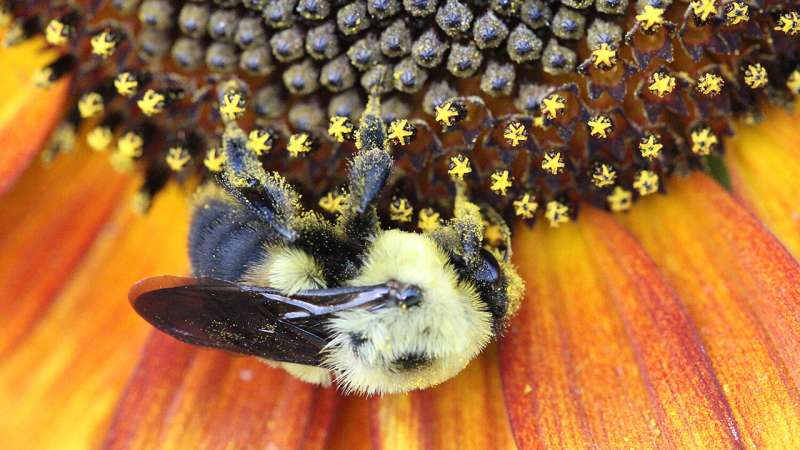Shorter and wider flowers could be less hospitable to the eastern bumble bee. Credit: Mario Simon Pinilla-Gallego
North Carolina State University researchers show that the shape of flowers has the biggest effect on how parasites are transmitted to bees, an important consideration for declining populations of our prodigious pollinators. The findings could help stakeholders plant flowers that are less likely to spread parasites in pollinator habitats.
The researchers examined the common eastern bumble bee (Bombus impatiens) and a gut parasite called Crithidia bombi to study how floral traits—like the size and shape of flowers or number of flowers—played roles in three steps that lead to parasite transmission to bees on flowers: fecal deposition on flowers, parasite survival on flowers, and acquisition of the parasite by a new bee host. Parasite spread has been implicated as a major driver of bee population decline.
"Of the flower traits we measured, floral shape was the best predictor of parasite transmission to bees," said Mario Simon Pinilla-Gallego, a former Ph.D. student in the Department of Applied Ecology at NC State and co-corresponding author of a paper describing the research, published in the journal Ecology.
"Wide and short flowers—like black-eyed Susans and coneflowers—reduce the survival of the parasite on flowers, but at the same time they collect more bee feces, and bees are more likely to come in contact with and acquire the parasite on these types of flowers," said Rebecca Irwin, professor of applied ecology at NC State and co-corresponding author of the paper.
The researchers say that identifying floral traits and flower species that have lower rates of parasite transmission to bees could provide a win-win for pollinators, as stakeholders could provide flower mixes that both promote bee health and provide floral resources for bees.
The researchers add that other factors—how often and how long bees visit flowers, the behavior of bees while foraging, and environmental factors that could change the effects of particular floral traits—provide future directions for studying bee health.
Victoria E. Amaral, a former NC State research technician, and Wee Hao Ng of Cornell University co-authored the paper.
More information: Mario S. Pinilla‐Gallego et al, Floral shape predicts bee–parasite transmission potential, Ecology (2022). DOI: 10.1002/ecy.3730
Journal information: Ecology
Provided by North Carolina State University























